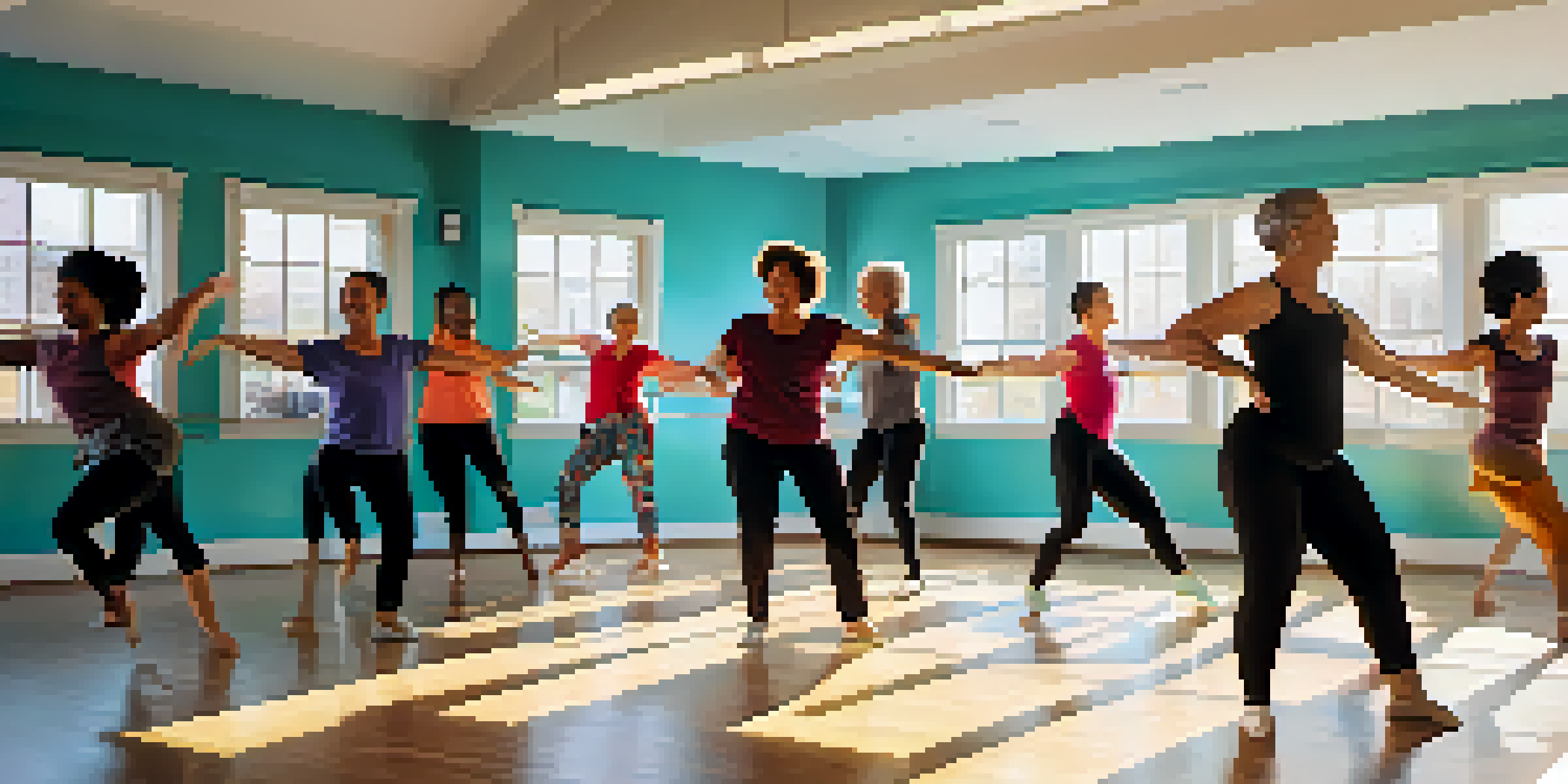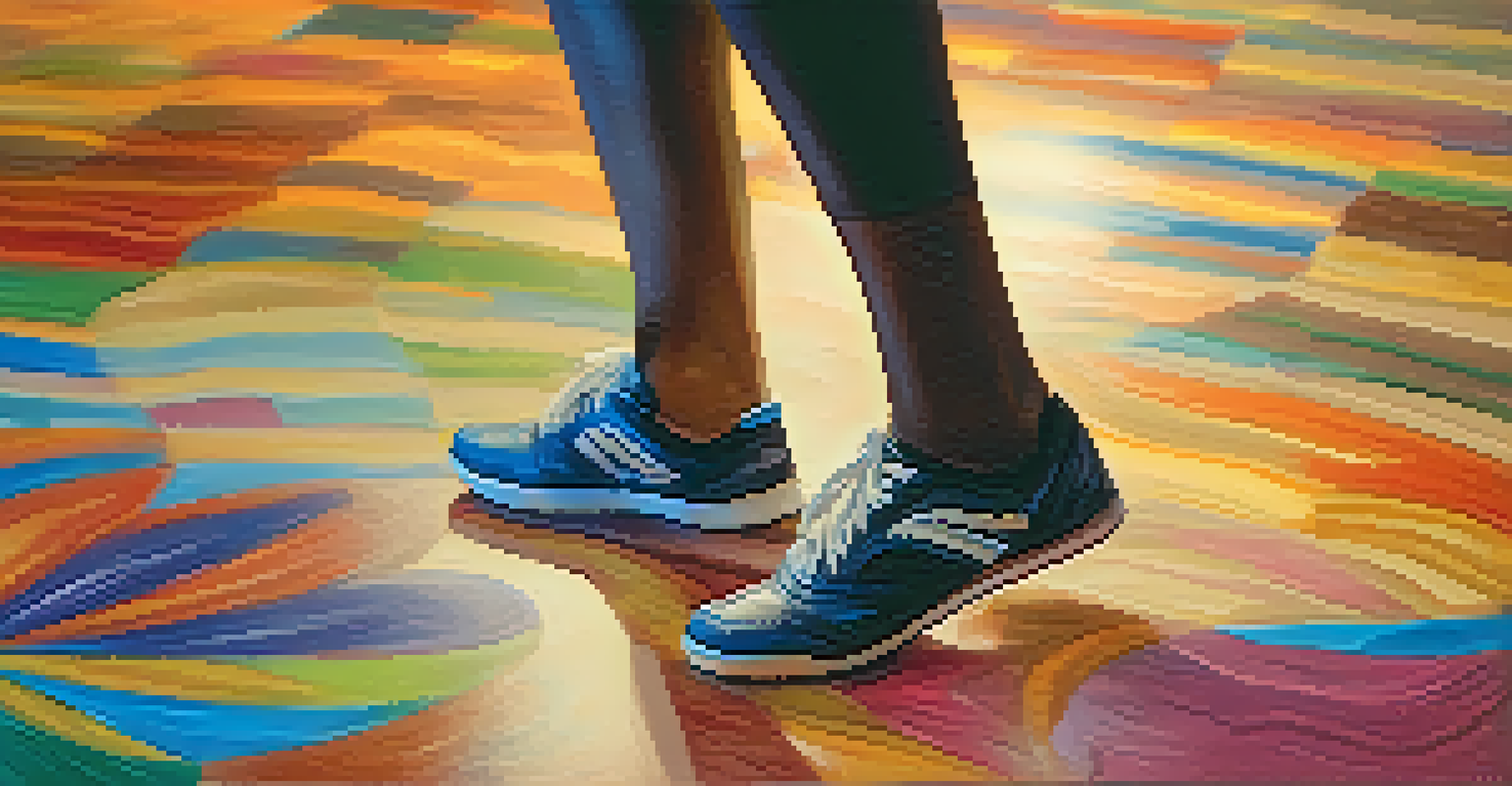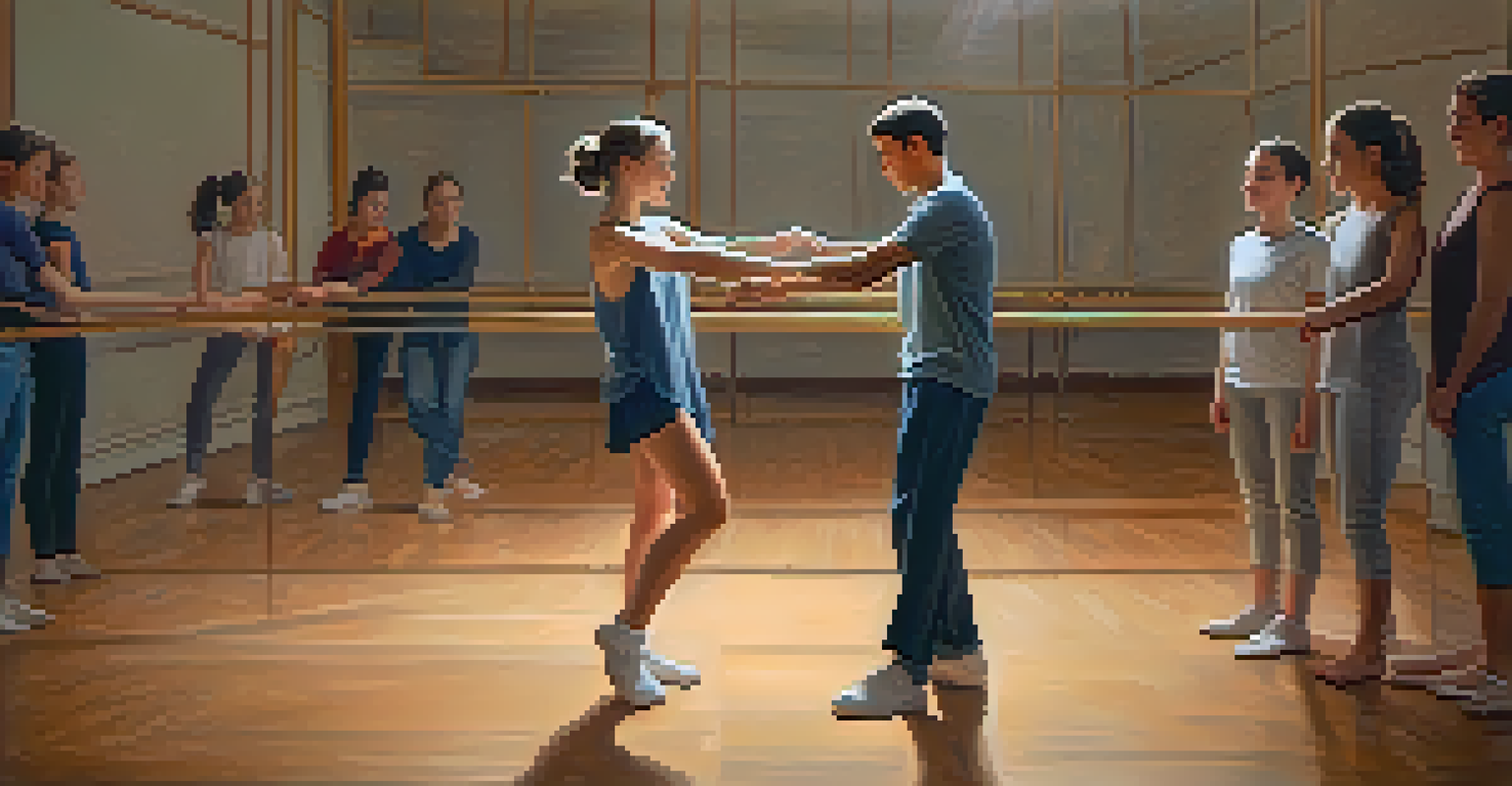Community Dance Programs: Engaging Neurodiverse Participants

Understanding Neurodiversity and Dance
Neurodiversity refers to the natural variations in the human brain and its functions. This includes conditions like autism, ADHD, and dyslexia, which shape how individuals perceive and interact with the world. Dance offers a unique medium for expression, allowing neurodiverse participants to communicate in ways that traditional methods may not accommodate.
We are all different, which is great because we are all unique. Without diversity, life would be very boring.
By acknowledging and celebrating neurodiversity within dance programs, we create an inclusive environment where everyone feels valued. This understanding encourages instructors to adapt their teaching styles, making classes accessible and enjoyable for all participants. When neurodiverse individuals engage in dance, they can express their emotions and creativity freely.
Incorporating neurodiversity into community dance programs not only enriches the experience for participants but also fosters empathy and understanding among all dancers. This collective engagement can break down stereotypes and promote a sense of belonging, which is vital for community cohesion.
Benefits of Dance for Neurodiverse Individuals
Dance provides numerous benefits for neurodiverse individuals, including improved motor skills and coordination. These physical improvements can enhance overall confidence and promote a sense of achievement. Additionally, the rhythm and structure inherent in dance can be particularly soothing, helping to reduce anxiety and foster relaxation.

Moreover, participation in dance can enhance social skills as neurodiverse individuals learn to communicate and collaborate with others. Group dance activities encourage teamwork and can build friendships, creating a supportive network among participants. This social aspect is essential for developing interpersonal skills that may be challenging in more traditional settings.
Understanding Neurodiversity
Neurodiversity highlights the diverse ways individuals experience and interact with the world, particularly through mediums like dance.
Furthermore, dance can serve as a powerful outlet for self-expression, allowing neurodiverse individuals to share their stories and emotions creatively. This form of expression can lead to increased self-awareness and a deeper understanding of their unique identities, empowering them in other aspects of life.
Creating Inclusive Dance Programs
To effectively engage neurodiverse participants, dance programs must prioritize inclusivity from the ground up. This begins with creating a welcoming environment where participants feel safe to explore and express themselves. Instructors should receive training on neurodiversity to better understand the needs and preferences of their students.
Dancing is like dreaming with your feet!
Flexibility is key in designing dance classes that accommodate various learning styles. For example, incorporating visual aids, breaking down movements into smaller steps, or offering sensory-friendly options can make a significant difference. By being open to feedback and making necessary adjustments, instructors can ensure that every participant can thrive.
Additionally, fostering a community atmosphere is crucial for encouraging participation. Regularly organizing events, such as performances or showcases, allows neurodiverse participants to shine and share their achievements with a supportive audience. These moments not only build confidence but also strengthen the sense of belonging within the dance community.
Examples of Successful Community Dance Programs
Numerous community dance programs have been successfully engaging neurodiverse participants across the globe. For instance, organizations like DanceAbility International offer classes specifically designed for individuals with different abilities, promoting inclusivity through adaptive dance techniques. Their approach emphasizes the joy of movement, regardless of ability or background.
Another example is the ‘Inclusive Dance’ initiative in the UK, which provides workshops tailored to neurodiverse dancers. These workshops focus on collaboration and creativity, encouraging participants to develop their own dance pieces while working alongside peers. This model not only fosters creativity but also builds a strong sense of community.
Benefits of Dance Participation
Engaging in dance provides neurodiverse individuals with improved motor skills, social interactions, and a unique outlet for self-expression.
These successful programs showcase the power of dance in breaking down barriers and creating opportunities for neurodiverse individuals. By sharing their experiences and outcomes, these organizations inspire others to adopt similar inclusive practices, furthering the reach and impact of community dance.
The Role of Parents and Caregivers
Parents and caregivers play a vital role in supporting neurodiverse individuals' participation in dance programs. By encouraging their loved ones to explore dance, they can help foster a sense of belonging and self-expression. Their involvement can also provide valuable insights, helping instructors tailor classes to meet each participant's unique needs.
Open communication between instructors and caregivers is essential for creating a supportive environment. Regular updates about progress, challenges, and successes can help caregivers feel connected to their loved ones' experiences. This collaboration ensures that everyone is on the same page and can work together to enhance the participant's journey.
Additionally, caregivers can advocate for the inclusion of neurodiverse individuals within dance programs. By sharing their experiences and highlighting the benefits, they can help raise awareness and promote the importance of inclusive practices in their communities. This advocacy can lead to more opportunities for neurodiverse individuals to engage in dance.
Overcoming Challenges in Community Dance Programs
While community dance programs can be incredibly beneficial, they often face challenges in engaging neurodiverse participants. One common issue is the lack of awareness or understanding of neurodiversity among instructors and participants. This gap can lead to unintentional exclusion, making it essential for programs to prioritize education and training.
Another challenge is the varying sensory needs of neurodiverse individuals. Some may be sensitive to loud music or bright lights, while others may thrive in a stimulating environment. Dance programs must consider these factors and create adaptable spaces that cater to a range of sensory preferences, ensuring everyone can participate comfortably.
Creating Inclusive Programs
Inclusion in dance programs requires adapting teaching methods and fostering a supportive community for neurodiverse participants.
Furthermore, providing ongoing support for neurodiverse participants can be a challenge, especially in larger classes. Implementing buddy systems or mentorship opportunities can help create a more personalized experience. By pairing neurodiverse dancers with supportive peers or mentors, we can enhance their confidence and ensure they feel included throughout their dance journey.
The Future of Community Dance Programs
The future of community dance programs looks promising, especially as awareness of neurodiversity continues to grow. More organizations are recognizing the importance of inclusive practices and are developing programs specifically designed for neurodiverse participants. This shift not only benefits individuals but also enriches the entire community through diverse perspectives and experiences.
As technology advances, we can expect innovative approaches to dance education that cater to neurodiverse individuals. For example, incorporating virtual reality or interactive apps could enhance learning experiences and make dance more accessible. These tools can provide alternative ways for individuals to engage, practice, and express themselves creatively.

Ultimately, the continued evolution of community dance programs will depend on collaboration, creativity, and a commitment to inclusivity. By embracing these principles, we can ensure that dance remains a vibrant and welcoming space for everyone, celebrating the unique contributions of neurodiverse individuals within our communities.